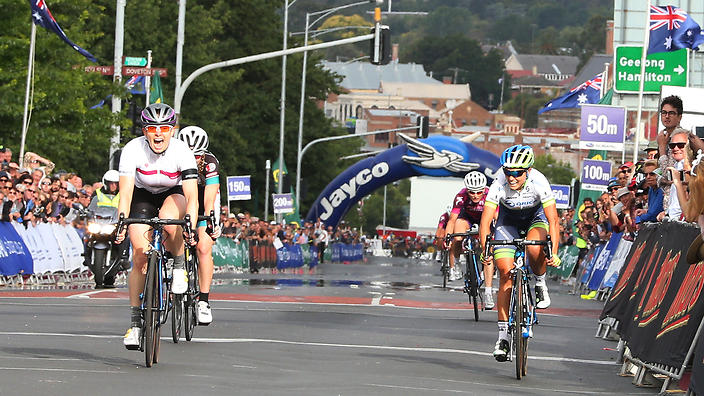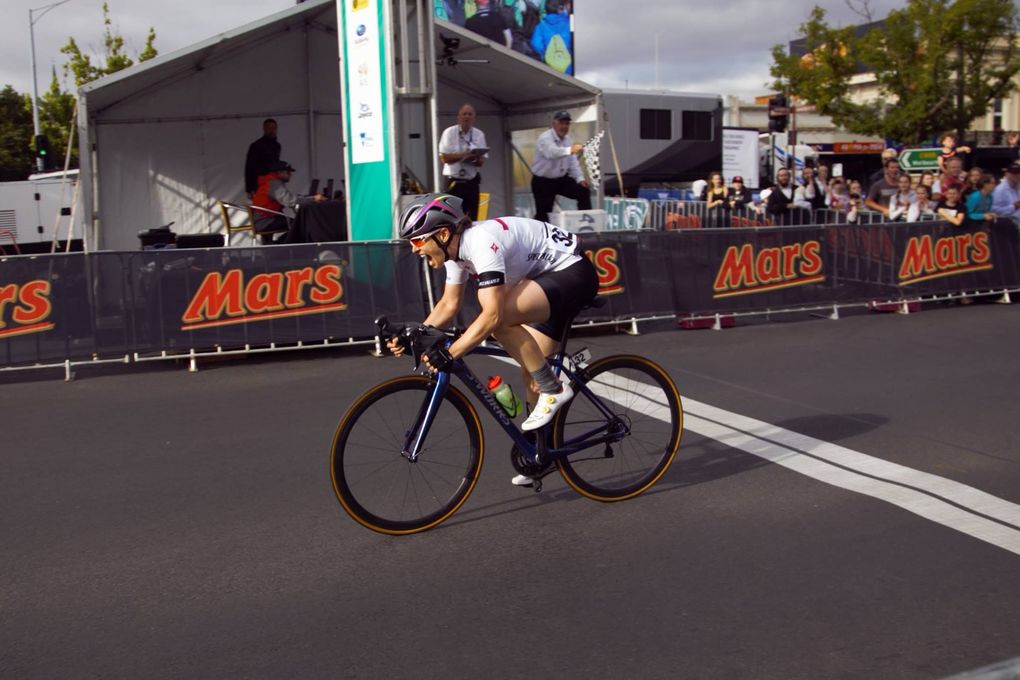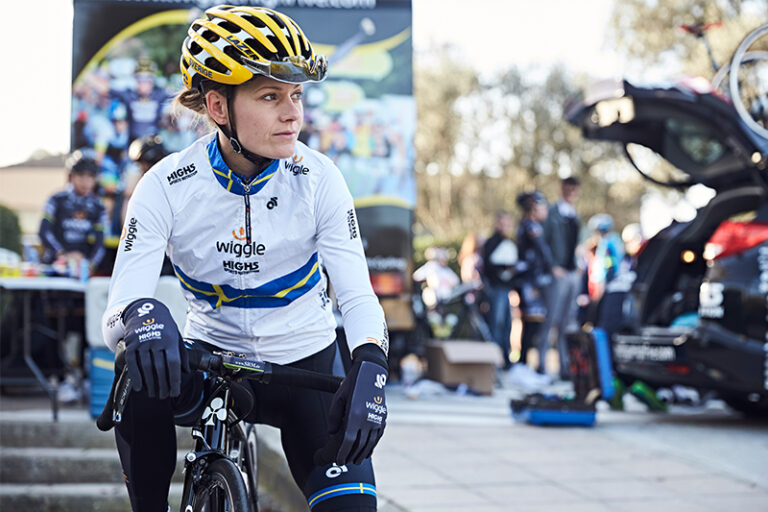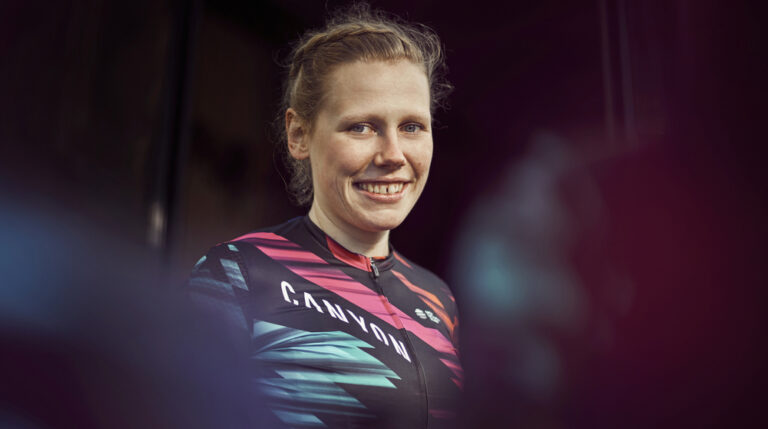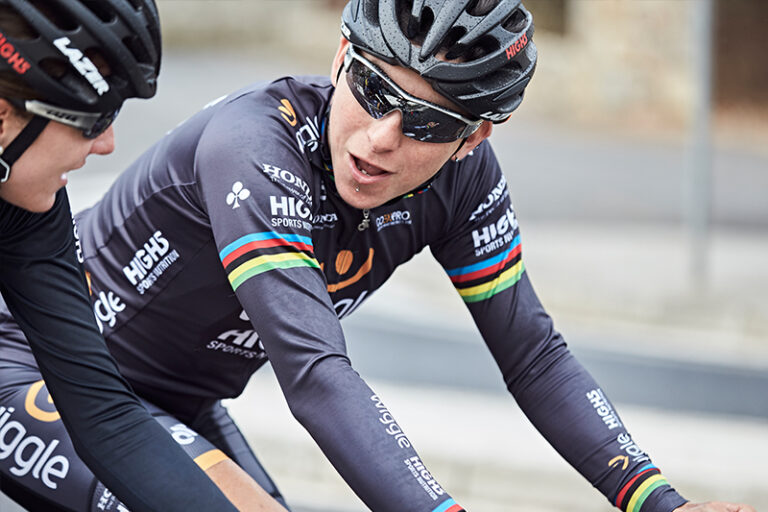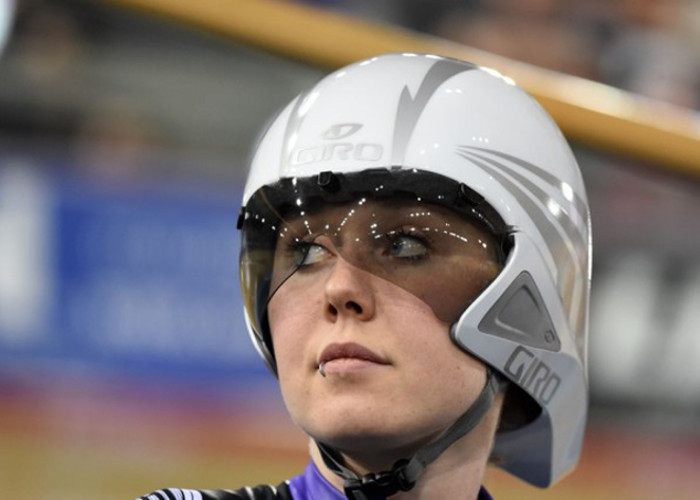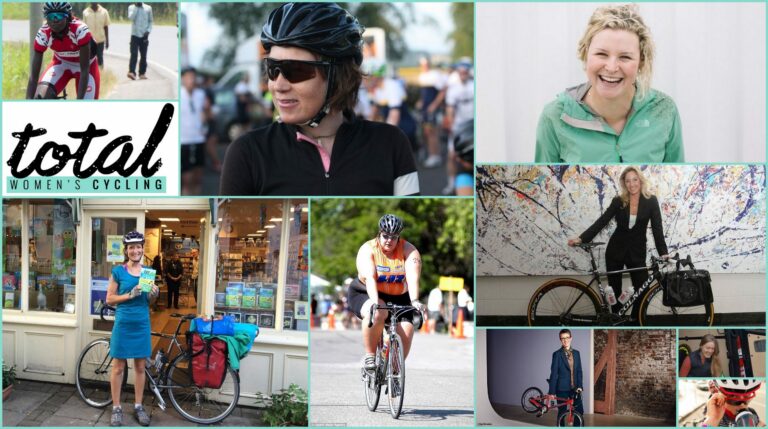Australia’s criterium champion schedules training around her 40-hour work week, yet wins races against full time pros. TWC contributor, Jessi Braverman, spoke to her about how she does it – even asking her for a sample week in training that you can follow!
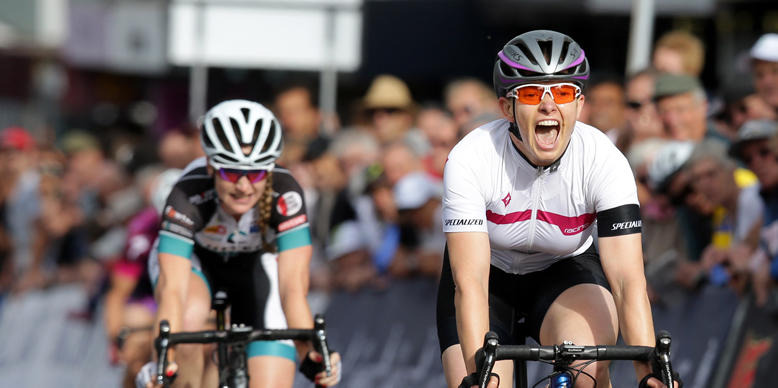
It was widely billed as a “surprise victory” when Sophie Mackay took hold of the Australian criterium title last month. The 30-year-old who juggles full-time work with domestic racing beat full-time, paid professionals and pre-race favourites to the coveted green and gold jersey. Mackay rode brilliantly to put herself in the nine-rider breakaway that would contest the finish.
“A lot of the commentary during the race was about how the smartest sprinters sit in and hide themselves,” said Mackay. “That’s essentially how I conducted myself in that race. It was almost like no one knew I was there.”
No one could deny her commanding presence at the finish. Mackay was late to start her sprint but a quick turn of speed allowed her to edge out Lizzie Williams (ORICA-AIS) and former criterium champion Lauren Kitchen (Hitec Products) to the line.
“I couldn’t believe it,” said Mackay. “I was absolutely astounded that it had all come together on the day.”
Yet it was exactly what Mackay and her coach had planned. Riding for Specialized Women’s Racing, Mackay contests Cycling Australia’s national calendar called the National Race Series (NRS). Following what she called “a bit of success” in intermediate sprints in NRS races during the first six months of the 2015 season, Mackay sat down with her coach to outline her objectives for the next six months. With plans to aim towards success at the National Criterium title, training had a large focus around sprinting – explosive efforts, repeated with short recovery in-between. It worked.
It was a win for the working woman who juggles training with, well, everything else.
Mackay, who logs 40 hours weekly as a finance clerk at Charles Stuart University, parlayed her understanding of her strengths and limitations, consistent training tailored to her specific goal and a strong support system into a national title against riders whose primary profession is behind the handlebars. It was a win for the working woman who juggles training with, well, everything else.
While you might not be coveting gold against your nation’s best, chances are you’re chasing dreams of your own. Mackay shares her tips for pursuing objectives on two wheels alongside the demands of daily life.

